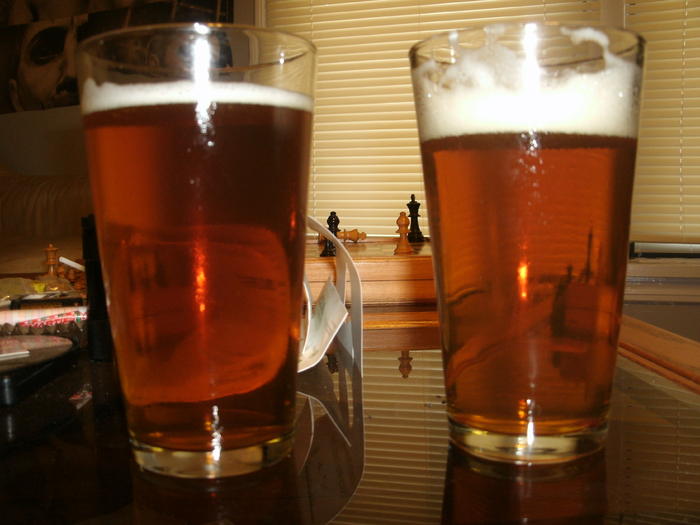I have been an extract brewer for some time now with quite a few batches under my belt, and I'm sick of the drab colors and extract flavors.
I'm not looking to fill half my garage with a large all-grain rig, so BIAB is perfect for me.
I'm shopping for a new 15 gallon kettle to get started. I've been looking at a couple with thermometers and ball valves because it sure makes it "seem" simplified.
I like the idea of a false bottom and a stainless plumbers hose under my grain and bag (I'm a filter nutlove clear, clean looking brews). I'll filter in every step if I can.
Is this the way to go with BIAB though? One, can I trust the built-in thermometer and two, should I worry about the extra filtering, or does a proper bag do the job?
So, a kettle with all the bells and whistles, or just a kettle?
About the ball valve ... I DO like the idea of simply hosing my wort into my fermenter rather than having to pour. Everything is getting heavier each batch I brew.
Thanks in advance.
/Will always still be figuring it out/
I'm not looking to fill half my garage with a large all-grain rig, so BIAB is perfect for me.
I'm shopping for a new 15 gallon kettle to get started. I've been looking at a couple with thermometers and ball valves because it sure makes it "seem" simplified.
I like the idea of a false bottom and a stainless plumbers hose under my grain and bag (I'm a filter nutlove clear, clean looking brews). I'll filter in every step if I can.
Is this the way to go with BIAB though? One, can I trust the built-in thermometer and two, should I worry about the extra filtering, or does a proper bag do the job?
So, a kettle with all the bells and whistles, or just a kettle?
About the ball valve ... I DO like the idea of simply hosing my wort into my fermenter rather than having to pour. Everything is getting heavier each batch I brew.
Thanks in advance.
/Will always still be figuring it out/



